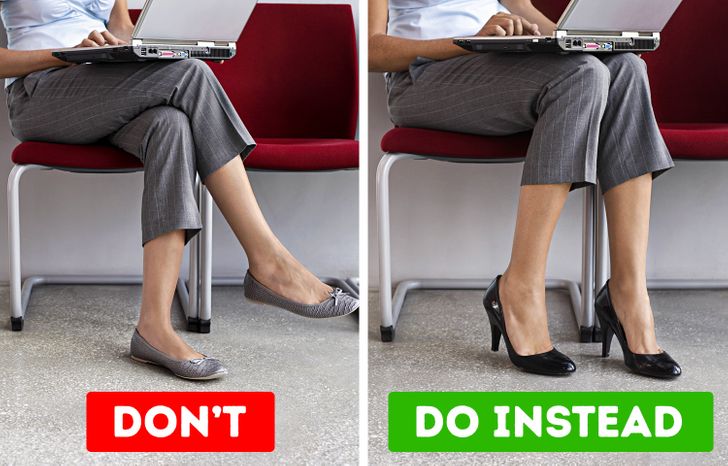Historical Context of the Mississippi Rocking Chair Position

The Mississippi rocking chair position, a posture characterized by sitting with legs extended and crossed at the ankles, is a unique and enduring aspect of American culture. Its origins and evolution are intertwined with the development of furniture design, regional lifestyle, and cultural practices. While the exact origins of this position remain elusive, its historical context sheds light on its enduring popularity and cultural significance.
Origins and Evolution of the Mississippi Rocking Chair Position
The Mississippi rocking chair position likely emerged in the late 19th century, coinciding with the rise of the rocking chair as a popular furniture piece in the American South. This era witnessed a surge in rocking chair production, fueled by the availability of readily accessible timber and the growing popularity of this comfortable and relaxing furniture. The rocking chair, with its gentle back-and-forth motion, became synonymous with Southern hospitality and leisure.
The Mississippi rocking chair position is believed to have developed organically, influenced by factors such as the design of rocking chairs, the climate of the Southern states, and the cultural practices of the region. The long, extended legs of the rocking chair naturally encouraged a posture with legs extended, while the relaxed and leisurely atmosphere of the Southern lifestyle likely contributed to the adoption of this comfortable and casual position.
Regional Factors and Cultural Influences
The Mississippi rocking chair position is closely associated with the American South, particularly the state of Mississippi. The region’s warm climate, with its long summers, fostered a culture of outdoor living and leisure. The rocking chair, a symbol of relaxation and hospitality, became an integral part of Southern life, and the Mississippi rocking chair position became a common posture for those enjoying the comfort of the rocking chair.
“The rocking chair, with its gentle back-and-forth motion, became synonymous with Southern hospitality and leisure.”
The Mississippi rocking chair position also reflects the region’s agrarian roots and the importance of community. The rocking chair served as a gathering place for neighbors and friends, and the Mississippi rocking chair position, with its relaxed and casual posture, became a symbol of Southern hospitality and the importance of community.
Historical Accounts and Anecdotes
Historical accounts and anecdotes provide further insights into the use and significance of the Mississippi rocking chair position. For instance, early 20th-century photographs of Southern families often depict individuals seated in rocking chairs, with their legs extended and crossed at the ankles, a testament to the prevalence of this position in Southern culture.
Furthermore, literary works, such as the novels of William Faulkner, often feature characters seated in rocking chairs, with their legs extended and crossed at the ankles, reflecting the prevalence of this position in the Southern literary tradition.
Physical and Ergonomic Aspects of the Mississippi Rocking Chair Position

The Mississippi rocking chair position, characterized by a reclined posture with legs elevated and knees bent, presents a unique set of physical and ergonomic considerations. Understanding the biomechanics involved in maintaining this position is crucial for assessing its potential benefits and drawbacks.
Biomechanics of the Mississippi Rocking Chair Position
The Mississippi rocking chair position involves a combination of muscle activation and joint positioning. The reclined posture engages the back muscles, particularly the erector spinae, to maintain spinal alignment. The elevated legs and bent knees put stress on the hip flexors and hamstrings, as well as the calf muscles. The position also affects the distribution of body weight, placing increased pressure on the lower back and hips.
Potential Benefits and Drawbacks of the Mississippi Rocking Chair Position
Comfort and Posture
- The reclined posture can promote relaxation and reduce pressure on the spine, potentially improving comfort for individuals with back pain.
- The elevated legs can help reduce swelling in the lower extremities, promoting blood circulation and reducing discomfort.
- However, prolonged maintenance of this position can lead to muscle fatigue and stiffness, particularly in the back, hips, and legs.
- The reclined posture may also contribute to poor posture over time, as it can weaken core muscles and promote slouching.
Musculoskeletal Health
- The Mississippi rocking chair position can potentially exacerbate existing musculoskeletal conditions, such as sciatica, herniated discs, and hip problems.
- The elevated legs can also increase pressure on the knees, potentially aggravating knee pain or osteoarthritis.
- On the other hand, the position may offer temporary relief from lower back pain by reducing pressure on the spinal nerves.
Comparison with Other Sitting Positions
The Mississippi rocking chair position stands in contrast to other sitting positions, such as upright sitting, cross-legged sitting, and the tailor’s position, in terms of its impact on posture and musculoskeletal health.
Upright Sitting
- Upright sitting promotes better spinal alignment and core muscle engagement, but it can also lead to discomfort and fatigue in the back and neck.
- Compared to the Mississippi rocking chair position, upright sitting places less stress on the hips and knees, but it may not offer the same level of relaxation.
Cross-legged Sitting
- Cross-legged sitting can lead to uneven weight distribution and pressure on the hips and knees, potentially causing discomfort and muscle imbalances.
- While it may offer some flexibility and relaxation, it is not recommended for individuals with knee or hip problems.
Tailor’s Position
- The tailor’s position involves sitting with crossed legs and feet tucked in close to the body, promoting relaxation and flexibility in the hips and thighs.
- However, it can also put stress on the knees and ankles, and it may not be suitable for individuals with limited mobility or joint pain.
Cultural and Social Implications of the Mississippi Rocking Chair Position

The Mississippi rocking chair position, with its relaxed and seemingly effortless posture, carries cultural and social implications that extend beyond its physical characteristics. This position, often associated with leisure and comfort, has become ingrained in the American cultural landscape, symbolizing various social constructs and influencing interpersonal dynamics.
Cultural Significance and Symbolism
The Mississippi rocking chair position has evolved into a symbol of Southern hospitality and leisurely living. This association stems from the historical use of rocking chairs on porches and verandas, where individuals would gather to socialize, relax, and enjoy the outdoors. The rocking motion itself is often seen as a gentle and rhythmic movement, evoking a sense of peace and tranquility. In popular culture, the Mississippi rocking chair position has been depicted in numerous films, television shows, and literary works, further reinforcing its association with Southern culture and a relaxed lifestyle.
Perceptions and Interpretations within Social Contexts
The Mississippi rocking chair position can be interpreted differently depending on the social context. In casual settings, it might be perceived as a sign of relaxation and comfort. However, in more formal situations, it could be seen as inappropriate or disrespectful, particularly if it is adopted in a professional environment. The position’s perceived level of formality can vary based on factors such as the setting, the individuals involved, and the specific cultural norms.
Role in Shaping Social Interactions and Communication, Mississippi rocking chair position
The Mississippi rocking chair position can influence social interactions and communication by conveying nonverbal cues about the individual’s demeanor and intentions. For example, someone adopting this position might be perceived as approachable, open, and relaxed, potentially fostering a more casual and informal atmosphere. Conversely, individuals who maintain a more upright posture might be perceived as more formal or professional. The Mississippi rocking chair position can also influence the flow of conversation, as its relaxed nature might encourage a more leisurely pace and a greater focus on casual conversation.
The Mississippi rocking chair position is a classic, but sometimes you crave a bit more support. That’s where the dutailier glider rocking chair comes in. Its gentle gliding motion and plush cushioning can make you feel like you’re floating on a cloud, which is a great alternative to the more vigorous rocking motion of the traditional Mississippi chair.
And, of course, the Mississippi rocking chair position still works great in a dutailier glider!
The Mississippi rocking chair position, with its legs stretched out and arms resting on the armrests, is a classic for a reason. But sometimes, even a well-loved rocking chair can feel a bit too firm. If you’re looking to make your wooden rocking chair even more comfortable, check out this guide on how to make a wooden rocking chair comfortable.
With a few simple tweaks, you can transform your rocking chair into the ultimate relaxation spot, perfect for enjoying that classic Mississippi rocking chair position.
